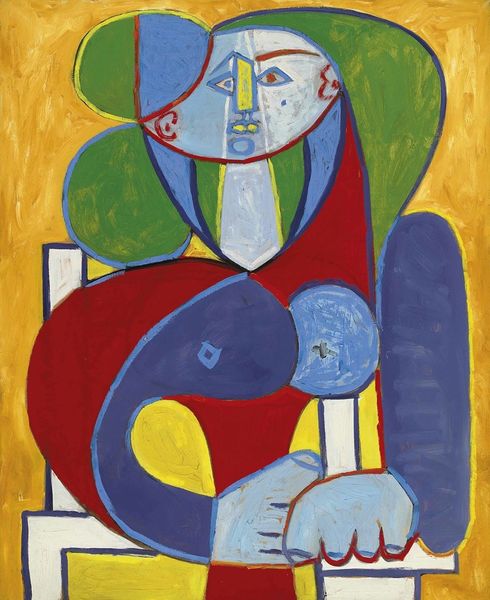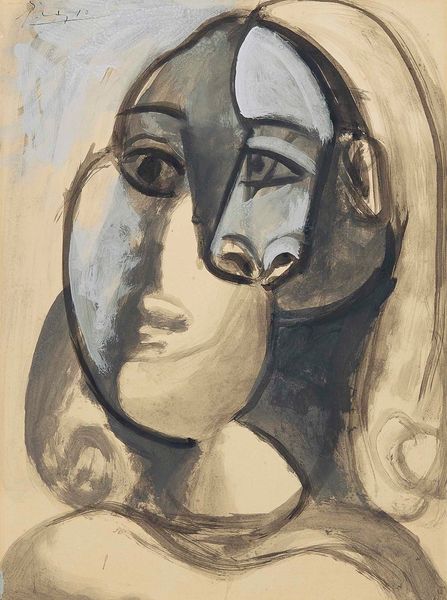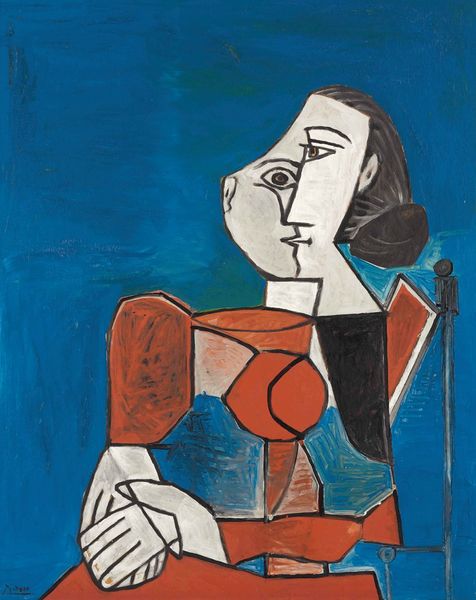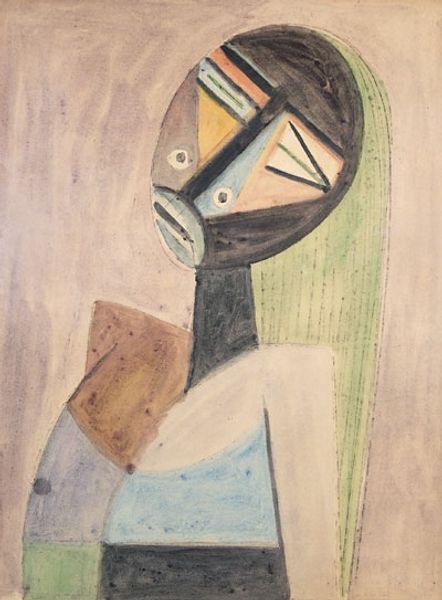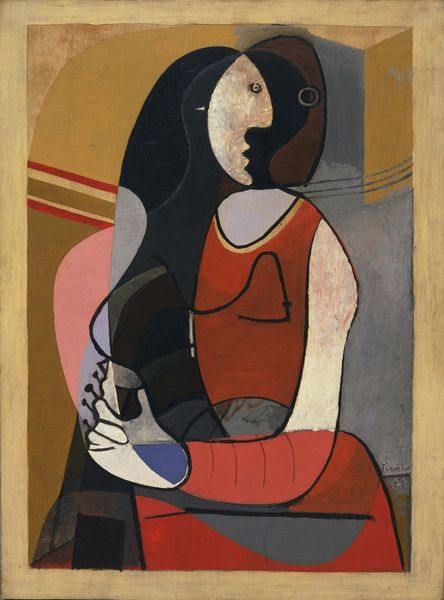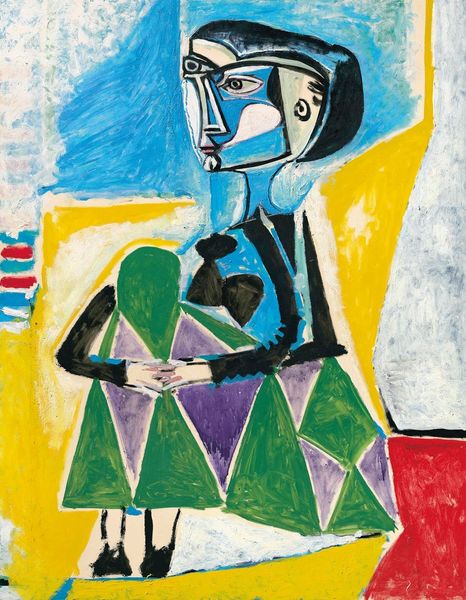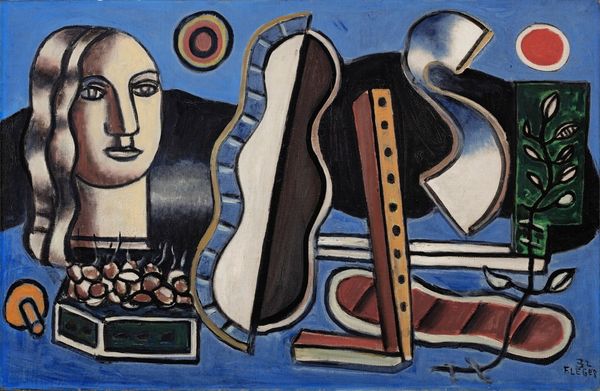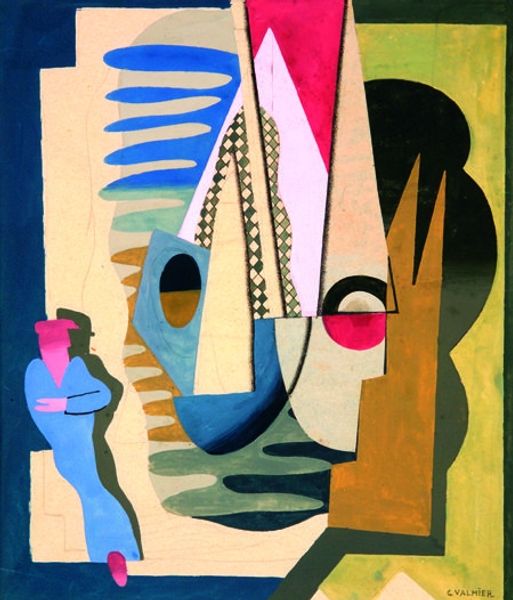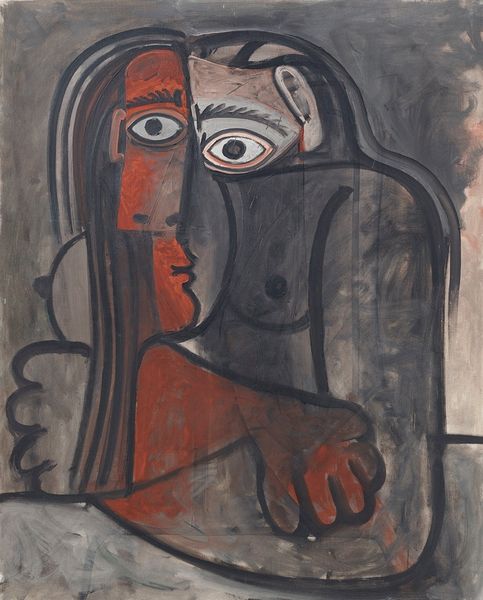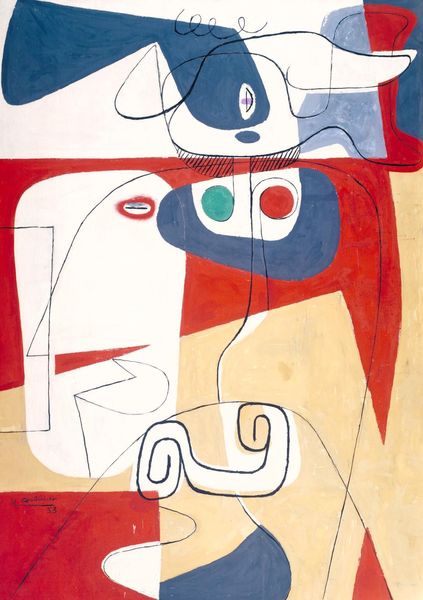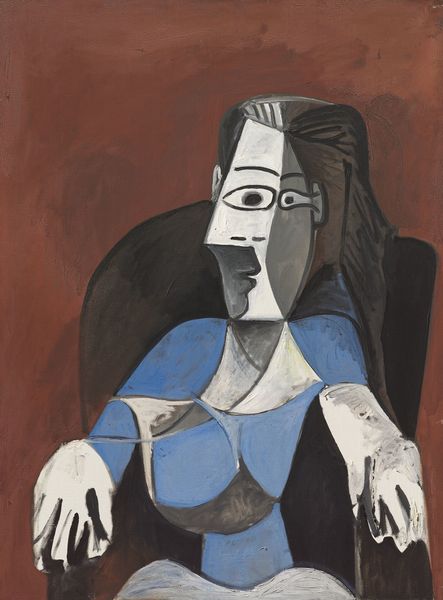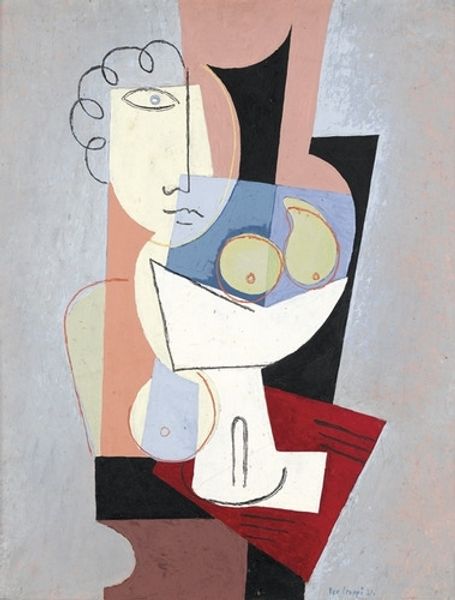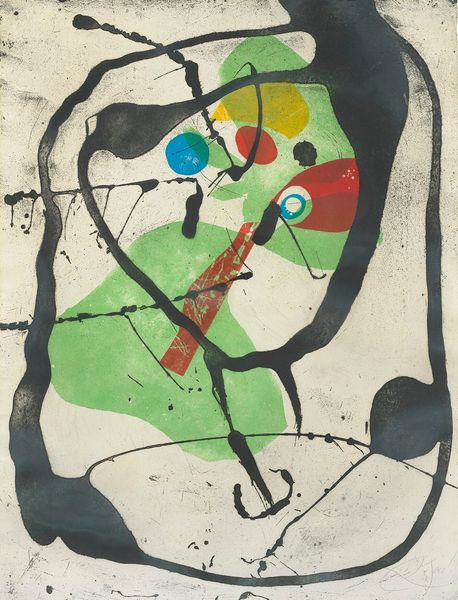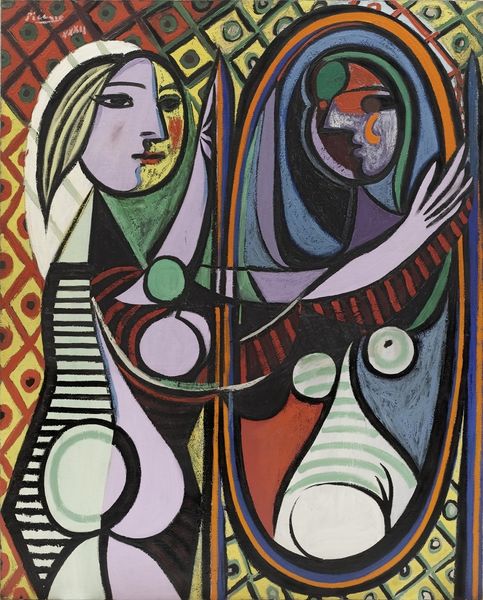
Copyright: Modern Artists: Artvee
Curator: What a stark portrait! The subdued palette makes it feel almost… ghostly. Editor: Indeed. We are looking at Pablo Picasso's "Portrait de Françoise Gilot," created in 1948 using oil paint. It offers a glimpse into his personal life, depicting Françoise Gilot, a painter and his partner at the time. Curator: Well, it’s interesting. On one level, it's an archetypal image of feminine beauty… and yet, simultaneously, so cold. The grey tones definitely suppress any sense of warmth, and the sort of teardrop trailing from one eye adds to this strange sense of muted despair. I see Cubist and Expressionist elements in this. Would you agree? Editor: Absolutely, you can see echoes of Cubism, in how he fractures and reorganizes her features. I agree it conveys a potent sense of emotion – perhaps hinting at underlying tensions within their relationship. I find that vertical line splitting the face into contrasting halves intriguing. Curator: Symbolically potent, for sure. Dividing the face is dividing the emotional landscape of the painting itself. And look at the hat! Perched so precariously. Maybe it suggests something about the shifting sands of their dynamic at the time. Those muted greens and blues against the pale, almost gaunt face create this powerful contrast. Editor: Fascinating, isn’t it, how a portrait can reveal so much, beyond mere likeness? The language of forms and colors becomes a window into the complex emotions and the ever-shifting power plays. And let's not forget, portraits for Picasso became a means for creative and emotional deconstruction. Curator: So true! I initially read sadness into this, but looking more carefully I wonder whether he isn't suggesting, even subtly, how Françoise influenced him during those years. Editor: I think you're onto something. Beyond a straightforward likeness, it's a rendering of her psychological impact, frozen in oil on canvas. Curator: It offers us more to contemplate regarding not just their personal dynamics, but more generally about human dynamics—what does that tear suggest? It allows this simple artwork to linger in the memory far longer.
Comments
No comments
Be the first to comment and join the conversation on the ultimate creative platform.
